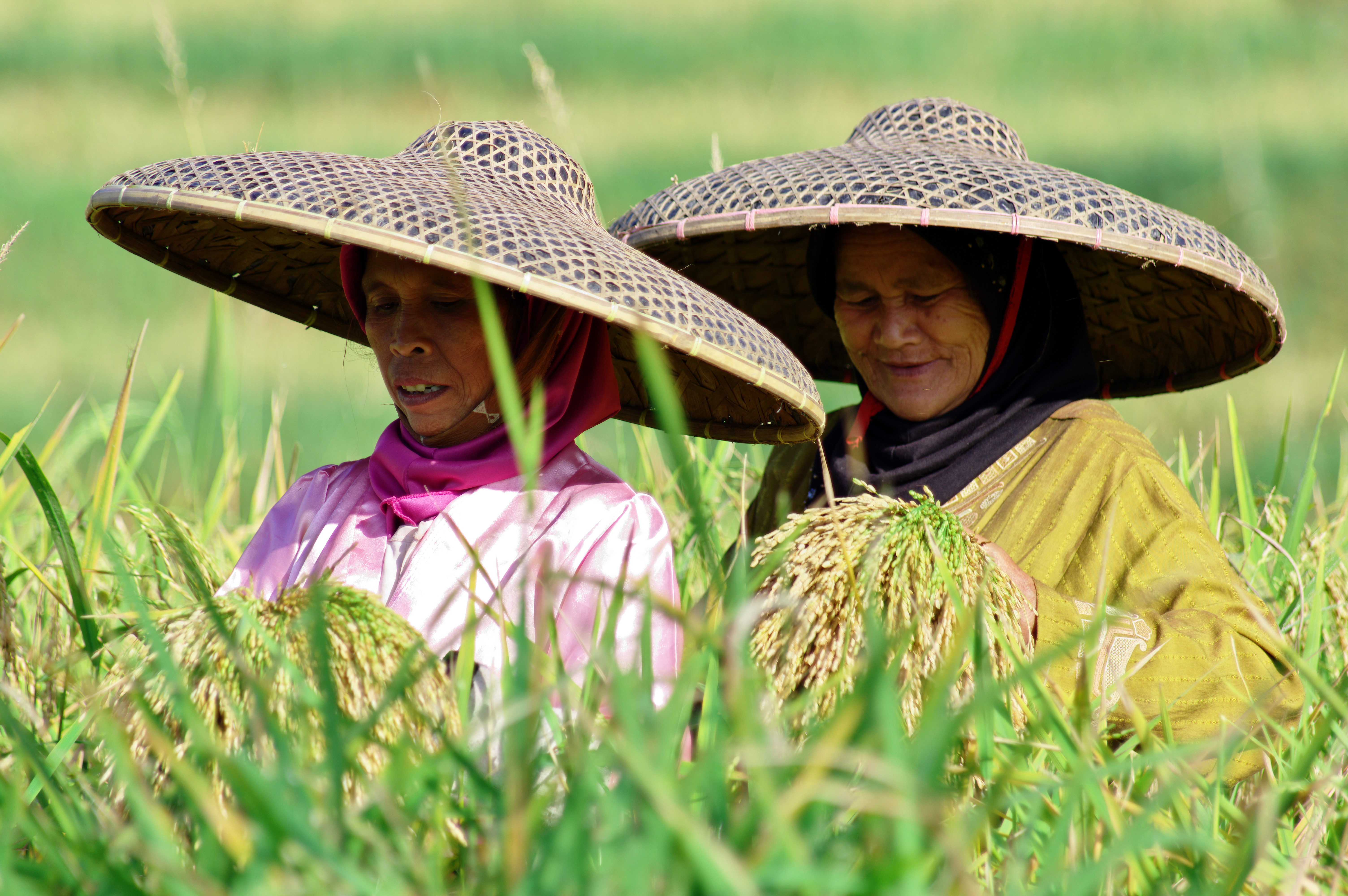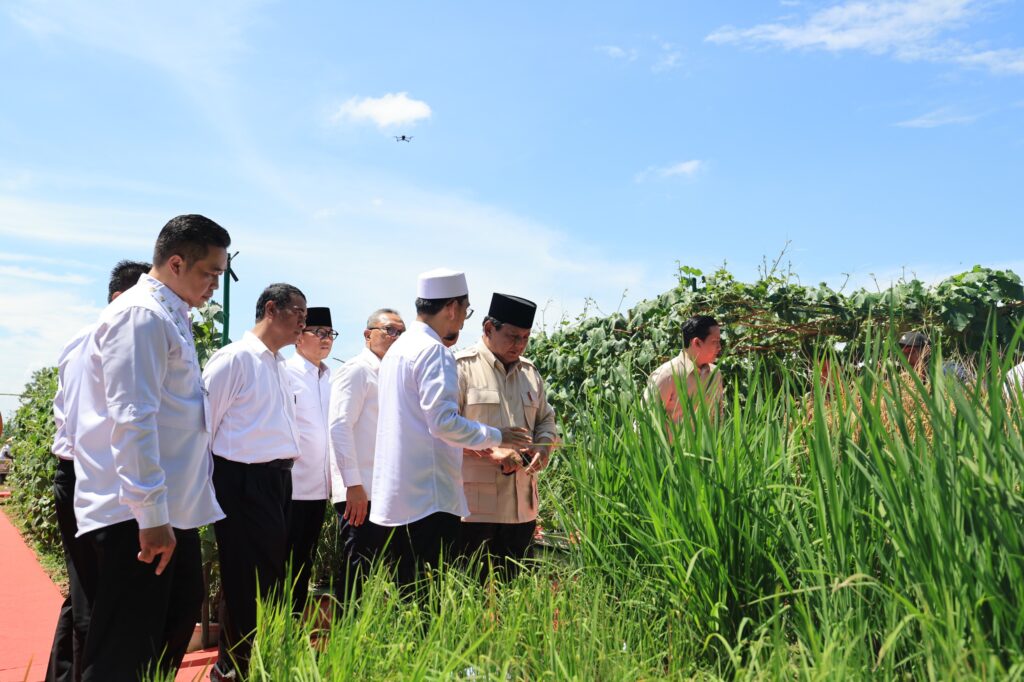Indonesia has officially been named the world’s fourth-largest rice producer, according to the Food Outlook Biannual Report on Global Food Markets released by the Food and Agriculture Organization (FAO) in June 2025. The report projects Indonesia’s rice output for the 2025/2026 planting season to reach an unprecedented 35.6 million tons—surpassing the government’s own national target and marking the highest figure recorded in the past three years.
This achievement places Indonesia behind only India (146.6 million tons), China (143 million tons), and Bangladesh (40.7 million tons), while outperforming other ASEAN countries such as Viet Nam, Thailand, Myanmar, and the Philippines. Indonesia’s performance is also notable for posting the fastest growth among the top producers, with a 4.5% increase from the previous period. According to FAO, this sharp rise reflects Indonesia’s resilience and growing competitiveness in the strategic food sector.
From Fields to Warehouses: Domestic Harvests Secure National Reserves
Aligned with this production boom, Indonesia’s rice reserves are also in excellent condition. Head of the National Food Agency (Bapanas), Arief Prasetyo Adi, reported that Perum Bulog currently holds 4.2 million tons of rice in storage. Of this total, 2.6 million tons were directly absorbed from domestic farmers, reflecting an effective absorption strategy during the recent harvest season. Arief credited rice millers for their critical role in stabilizing the national rice supply, saying, “We thank every player in the rice ecosystem—especially rice millers—who supported the government’s efforts to build a strong national reserve.”

These domestic contributions are crucial to strengthening the Government Rice Reserve (Cadangan Beras Pemerintah, CBP), which acts as a safeguard against market disruptions and seasonal shortages. With the main harvest season completed in March and April, the need to rely on existing reserves becomes even more critical in the months ahead.
Bracing for the Lean Months: The Second-Half Challenge Ahead
Despite the strong performance in the first half of the year, challenges lie ahead. Arief warned that Indonesia typically experiences a production slowdown between November and January—the so-called “lean months” for rice supply. To maintain market stability, the government is preparing to tap into the CBP to support distribution and control price volatility. “This is when our Government Rice Reserves become crucial—and we are already on the right track,” Arief explained.
As of June 26, Bapanas’ Food Price Panel recorded the average price of dry-harvested paddy (GKP) at Rp6,733 per kilogram, which is 3.58% above the official Government Purchase Price (HPP) of Rp6,500. Compared to the previous month’s price of Rp6,621, this marks a 1.69% monthly increase. With no major harvest expected in the near term, the risk of rising rice prices could persist unless mitigated by strategic releases from government reserves.
How the Government Is Stabilizing Rice Prices and Supply
To cushion the impact of reduced production in the second half of 2025, the government has deployed large-scale intervention strategies aimed at securing both supply and affordability. One of the key programs includes the distribution of rice aid to over 18.2 million beneficiary families (KPM), a social safety net initiative aimed at food-insecure households. Additionally, the government is expanding its Rice Supply and Price Stabilization Program (SPHP), with a distribution target of 1.318 million tons by year-end.

Arief emphasized that most of the rice from the March–April harvest—around 7 million tons—remains in the hands of rice mills, farmers, and communities. Ensuring its fair circulation in the market will be a central challenge as prices rise and stocks tighten.
More Than Just Rice: What Experts Say About Food Security
At the academic level, Professor Tri Haryanto from Universitas Airlangga addressed the broader implications of rice production in his inaugural lecture on agricultural economics. He argued that food security must encompass more than just availability—it must ensure food is safe, nutritious, accessible, and produced sustainably. “Rice farming is not just about quantity; it must also support environmental resilience, farmer welfare, and the future of food systems,” Prof. Haryanto stated.
Despite Indonesia’s success in reaching 90% food self-sufficiency, the country still relies on rice imports to close the gap during lean periods. For this reason, domestic production must be continuously strengthened through policy support, market incentives, and capacity-building programs.
Putting Farmers First: Policies That Build a Resilient Future
Prof. Haryanto also emphasized that smallholder farmers remain the backbone of Indonesia’s food economy—and that they deserve more than just seasonal recognition. He proposed several policy solutions, including fair commodity pricing, access to better infrastructure, modern technology, irrigation improvements, and targeted subsidies. His remarks also highlighted the importance of inclusive support for women farmers and climate-smart agricultural practices.
“Farmers should not just be seen as producers,” he concluded, “but as key actors in building a resilient, equitable food system for Indonesia’s future.”
A Symbol of Strength: Why Indonesia’s Rice Story Matters
Indonesia’s 2025 rice achievement is more than a statistical success—it is a testament to how government coordination, institutional trust, and farmer innovation can come together to meet the nation’s food needs. With consistent policy leadership and community engagement, Indonesia has proven that it can move from food insecurity toward sovereignty.
Rice, the staple that sustains millions, is now also the nation’s symbol of resilience, prosperity, and pride.



















